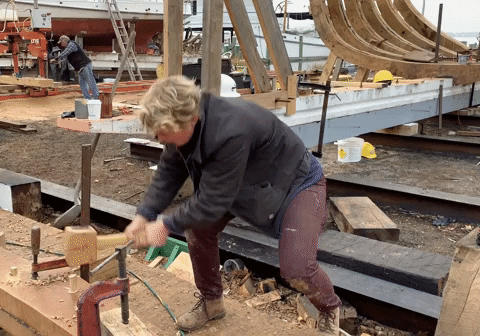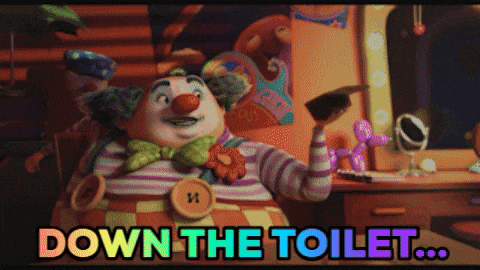Blog Archives
Coaches: Harsh Conditions Do Not a Great Garden Make

One of the things that never ceases to amaze me is the way too many fastpitch softball coaches choose to treat their players. Whether I am walking by a field when a team is practicing or just talking to some of my students, the “tough guy” (or “tough gal”) stereotype seems to be alive and well.
Now understand, I am all for discipline and accountability. There is nothing wrong with demanding the very best from your players on a daily basis.
But that doesn’t mean you have to berate and belittle them on a constant basis. It’s like the only tool in some coaches’ toolbox is a hammer – a big one – and they feel they have to use it all the time in order to draw the best performance out of their players.

I don’t get where they think that will work. If an adult had a job where they were receiving nothing but negative feedback or outright abuse, you can bet they’d be posting a negative review on Glassdoor at the very least and looking for a new job as soon as they could.
It’s like the old saying – people don’t leave jobs, they leave managers. Yet coaches are still surprised when their players don’t return the next year.
It might help to think of your players as seeds that need to be nurtured. Yes, some plants can grow in the concrete under harsh conditions, getting trampled all the time.
But they rarely turn into beautiful gardens. Instead, they look small and sad – not the types of plants anyone is going to stop and admire.
The same is true of fastpitch softball players. Especially the younger ones – those under the age of 14 who tend to take everything adults say at face value.
If all they ever hear is how bad they are, or how stupid they are for missing a play or making an error, they will tend to believe it.
Sure, an occasional player might break through that difficult environment and survive, but most will not. They will find another outlet that helps them feel better about themselves.
Which means if the goal is to grow the game, taking an approach that drives them out makes little sense.
Coaches who want to be tough also have to remember that what they view as “normal” may not seem so normal to their players. As I have said many times, kids are not short adults. They often lack the experience and background to put certain things in perspective.
Harsh criticism doesn’t just roll off their backs. They aren’t yet able to “take it with a grain of salt.”
Kids in many cases are very literal. And females in general are more prone to believing whatever negative things are said about them.
So what winds up happening is that performance under these conditions goes down instead of up, which leads to even more berating and abuse, which hurts performance even more, and the results take a familiar path.

Taking this type of approach may make you feel good as a coach, or like you’re doing your job. But it’s really lazy coaching.
Rather than yelling at or otherwise berating your players for poor performance, why not help them get better? Teach them the game, and understand everyone learns in different ways and at different paces.
Hold them accountable when needed, but understand the difference between a lack of ability (at this time) and a lack of effort. Only the latter should bring out your ire. The former should drive you to find new and better ways to help your players learn and improve.
Provide a little sunshine, a little water, and a good overall environment and your players will grow faster and much healthier in the game.
Stop Chasing Rainbows on Technique

Let me start by saying I am a fan of continuous learning. I believe it is every coach’s responsibility to constantly question what they already “know,” look for new information and innovation, and keep up with the latest advances in our sport.
This is one of the reasons I pursued and attained Elite certification in the High Performance Pitching program back in the December/January timeframe, and continue to participate in weekly calls with other accomplished pitching coaches from across the country. I’ve been doing this for a long time and could easily decide to be comfortable with what I already knew. But if there is a chance I can do better in helping the athletes I coach you can bet I will look into it.
All that said, there is another side to this mostly positive coin – what I would term as “chasing rainbows.” A coach who is chasing rainbows isn’t really looking to add to their knowledge and synthesize what they believe so they can teach it in an organized manner.
Instead, this is a coach with no set of firm beliefs to challenge. Instead, he/she merely adopts and repeats whatever he/she heard most recently from someone perceived as being smarter than the coach. Here’s an example.
A hitting coach attends a coach’s clinic where the presenter explains why you want a slight uppercut swing with the hips leading the hands. So she takes furious notes, highlights the handout, and runs back to her team to show them this “new” way to hit.
Note that she doesn’t take time to compare the information to what high-level hitters do, or to think through how it applies to the players on her team. She simply parrots the talking points and hopes for the best.
A few months later, she attends another clinic where the presenter talks about starting with the hands and swinging down on the ball to create backspin. Again, she takes furious notes, highlights the handout, and guess what? Now her team is learning an entirely new way to swing (and an incorrect one, I might add) before the players have had a chance to master the previous way.
What you end up with is a team caught somewhere between their original swings, the techniques of the first clinic and the techniques of the second clinic. Then the head coach wonders why the team has a collective batting average of .257 and can’t seem to produce runs on any sort of scale.
A better approach would be to start with a firm set of beliefs about hitting, preferably based on the teachings of someone who has been successful coaching hitters along with a close study of high-speed video of high-level softball and baseball players actually swinging the bat.
Note that I didn’t say a study of what those high-level players say. Just because they can hit doesn’t mean they know how to explain what they do. You’d be surprised how many of them say one thing and do something else.
Once the coach has a starting point, then start taking in information and comparing it to those beliefs in the same manner. For example the conflict between whether to swing down on the ball or swing with a slight uppercut at contact.
Whichever side the coach starts on, look at information from the opposite side and see how it compares to those high-level swings. If what is being said matches what is being seen, the coach will probably want to re-evaluate her beliefs. If it doesn’t, the coach is probably already on the right track.
When a coach can attend a clinic or other presentation and critically evaluate the material being presented she can be fairly confident that her decision on whether to adopt what is being taught there or discard it will be a good one.
Of course, it doesn’t have to be a binary choice. The coach may find that 95% of what is being presented is just old thinking, but that the other 5% has some value, if not for the whole team at least for one player.
This is especially true when it comes to drills. People talk about “good drills” and “bad drills.” But with rare exceptions, any drill is good that can help a player get to where she needs to go, even if it’s not the best course for everyone.
This idea of working to adopt a firm philosophy doesn’t just apply to hitter. It can apply to any skill within fastpitch softball, even if what you’ve been doing has been successful.
Heck, I’ve taught throwing a certain way for a number of years, based on the best information I had available to me at the time. After being exposed to Austin Wasserman’s High Level Throwing program I’ve changed what I teach to some extent. Not because it’s the flavor du jour, but because what he says makes sense in the context of what I already understand about throwing.
For many of us, change can be difficult. But for some it actually comes too easily.
Find something or a set of somethings you believe in after careful consideration, then work to build from there. Because the funny thing about chasing rainbows is that while you may feel you’re getting closer, you’ll never catch them. And you may actually take yourself farther away from your preferred destination.
Rainbow photo by James Wheeler on Pexels.com
Getting Your Money’s Worth Out of Softball Private Instruction

If there’s one thing I think nearly everyone in the softball world can agree on these days it’s that softball private instruction isn’t cheap. Especially in areas where you have to be indoors for at least part of the year.
The facility costs alone can get quite expensive. Then add in the cost for the instructor and it’s definitely not for the faint of heart – or wallet.
A dedicated family can easily spend hundreds or even thousands of dollars by the time it’s all added up, particularly if the instruction goes on for a few years.
That’s why it often shocks me how little effort so many parents seem to put into the decision. If they were buying a new lawn mower, or a refrigerator, or a set of tires for their car they’d probably do tons of research.
They’d look for professional reviews, they’d look for user ratings, they’d compare specs, and maybe even go to a store and look the item over.
That’s why items in this price range (and above) are called “considered purchases.” You don’t just buy them on a whim. You put some thought into the decision because it’s going to put a dent into your wallet and you’re probably going to have to live with whatever you choose for a while.
The cost of softball private instruction can easily surpass all of those items. You’re just doing it on a per-lesson “payment plan.” Yet based on what I’ve seen so many people accept, it seems they go into that expensive purchase that can have so much impact on their daughter’s softball career blind.
Here in the digital age, with a world of knowledge just a few clicks away at most, there’s simply no reason to get anything less than a full return on your softball investment. Here are some ways to make sure you do.
Do your homework on what is good
This is probably the easiest and yet most-ignored piece of advice. I think many parents start out by looking for an instructor who is close to them. To me, that’s putting the cart before the horse.
Before you go looking for instructors, do some homework on what you want your daughter’s instructor to teach. Put in some time to learn what is currently considered the state of the art for hitting, pitching, catching, throwing, fielding, etc.
See what well-known, high-level instructors and coaches are saying. Many of them generously share their knowledge on YouTube, or on sites such as the Discuss Fastpitch Forum. (FULL DISCLOSURE: I am also the administrator at the Discuss Fastpitch Forum, but it is a free resource with open discussions, not a selling site.)
There are plenty of quality paid sites as well, and some with a mixture of free and paid information such as Cindy Bristow’s Softball Excellence, and (hopefully soon) Fastpitch Foundations for pitching.
Once you start getting your feet wet into it, the other thing you can do is look at what high-level players do and see how that lines up with what you’re reading/watching in the instructional materials. You’d be amazed at how many people, even the players themselves, don’t actually understand how high-level players execute their skills.
Check them out on YouTube and other sites, and watch as many high-level games on TV as you can. You’ll start to see the similarities.
Many myths abound, so it’s important to gain as much understanding as you can before you go into it. That way, when you’re evaluating instructors you’ll have a better chance of selecting one who is teaching the techniques actually being used by high-level players.
Watch other local players
Once you have a decent understanding of the instruction you’re looking for, it’s time to start investigating your options. A good way to do that is to observe players, either in games or a practice session, who look to have the techniques you want your daughter to acquire. Then ask them (or their parents) who their instructor is.
Be careful, however, not to confuse “good” with “well-trained.” A gifted athlete – one loaded with lots of fast-twitch muscles and/or exceptional hand/eye coordination, for example – can be successful with no training or even poor training.
(In the latter case, they usually end up not doing anything they instructor says because their body just figures out what do. But they still think they’re doing what they’ve been told.)
That, incidentally, is why looking at an instructor’s record of developing high-level players (think: college) isn’t always an accurate indicator of his/her quality. It’s tough to know how many of them would have succeeded without that coach – or did succeed in spite of him/her. It takes a lot more than “the right instructor” to reach that level.
What you’re looking for instead are players who execute the skills properly, as you understand them from your research. If they don’t appear to be the greatest natural athletes so much the better, because then you know their success is due to their training and dedication.
Last summer I had a perfect case study of how this works. I received a call out of the blue from a father whose daughter is a catcher. They live about an hour’s drive away (with traffic), so it wasn’t a decision he was entering into lightly.
But he said he’d seen a really outstanding catcher in one of their tournament games and he asked where she learned her skills. The parents referred him to me, and I’ve been working with his daughter ever since.
I’m sure he passes a whole host of instructors to get to me, but it doesn’t matter. Because he knows his daughter is being trained in a way that matches his expectations.
Have a conversation
Once you think you’re on the right track, have a conversation with any potential instructors. Get a feel for their knowledge level and what they teach.
One thing you want to determine is whether they take a “cookie cutter” approach, using the same drills and progressions for everyone, or whether they customize the instruction to the student.
It will take some players longer to grasp certain concepts or movements. A good instructor will keep them working to become at least competent at those skills before moving them on to the next one.
Others will grasp the concepts or movements right away. In those cases there is no sense in lingering on them because the stock lesson plan says “on lesson 7 we do this.” Move on.
Do what you can to determine how much the instructor customizes the instruction. Again, a good instructor will teach the same things to all of his/her students. But he/she will do it differently for each.
That conversation is also the time to ask questions. If you know you don’t want your daughter learning certain techniques, such as “hello elbow” for pitching or “squish the bug” for hitting, ask the instructor about it. An informed parent is a smart parent.
Also, don’t be afraid to ask for the “why” behind what the instructor teaches. If there isn’t a “why,” I suggest you politely excuse yourself and move on to the next instructor. Everything should have a purpose.
Do a chemistry test
So you think you’ve found an instructor who has the knowledge and experience to train your daughter properly. The last test is to see what the chemistry is like between the instructor and your daughter.
We all have different personalities and ways of learning. And sometimes people just rub us the wrong way for no apparent reason. That’s life.
If there is a chemistry mismatch, lessons are going to be a drudge for both the instructor and student. You and your daughter will presumably be spending a lot of time working with this instructor, so you want to be sure they are working together as a team.
Also, you know your daughter better than the instructor ever will. You should be able to read her body language and enthusiasm level. A good coach will inspire her to do her best and help her feel good about the learning process.
If that’s not what you’re seeing in a conversation between the instructor and your daughter, or a sample lesson, you may want to continue your search.
Monitor success
Once you’ve made a selection, you’re not done. Keep monitoring to see how things are going.
Is your daughter getting better? Is her technique moving toward what you saw on TV from those high-level players? Is she gaining confidence in herself and her abilities?
The change is unlikely to be instant. It’s more likely to be incremental, with some frustrations and setbacks along the way. But over time you should be seeing speed and accuracy increases in pitcher, better blocking from catchers, stronger and more frequent hits from hitters, etc.
And perhaps someday some random parent will come up to you at a game or tournament and say, “Your daughter is really good. Do you mind telling me who her instructor is?”
Ultimately, however, the best ROI is the smile on your daughter’s face when she is successful and feeling good about herself. That’s when you’ll know it’s all been worthwhile.
Why players with new skills are like new drivers
Earlier today I was emailing with my friend and fellow coach Mike Borelli about how players who look great in practice will come out into games all nervous and tentative. It’s actually pretty common.
They work hard to learn their skills. They take lessons, they practice, they really put a lot of effort into it. Then they get into a game and they look like the proverbial deer in headlights.
Perhaps the best analogy I can come up with, and one that most of us can relate to, is when we start to drive after getting our driver’s licenses. Even though we’ve received hours of instruction, and spent countless more hours driving with our parents (or other qualified adults), none of that matters the first time we’re handed the keys to the family car.
We are nervous, we are tentative, we are afraid that we will make a horrible mistake and wrap the car around a tree, or will have trouble parking it and scratch the paint, or do something else that will get us in trouble. So we drive cautiously at first.
Eventually, though, we gain experience and confidence as continue to drive, and after a while it becomes second nature. If you’ve had your license for any length of time you probably don’t even think much about where your hands go or where to look on the road. You just get in drive.
That’s the same experience players often have after they’ve worked on new skills. No matter what they’ve done off the field, nothing compares to actually being in a game. Until they’ve had a chance to “drive” those skills for a while they’ll be tentative, unsure of what they can do and wanting not to make any mistakes.
It’s just a part of the total experience. The best you can do is give them the “keys” and give them the opportunity to get comfortable with their new skills. The more experience they gain the more they’ll relax, which will really put them in the driver’s seat.






